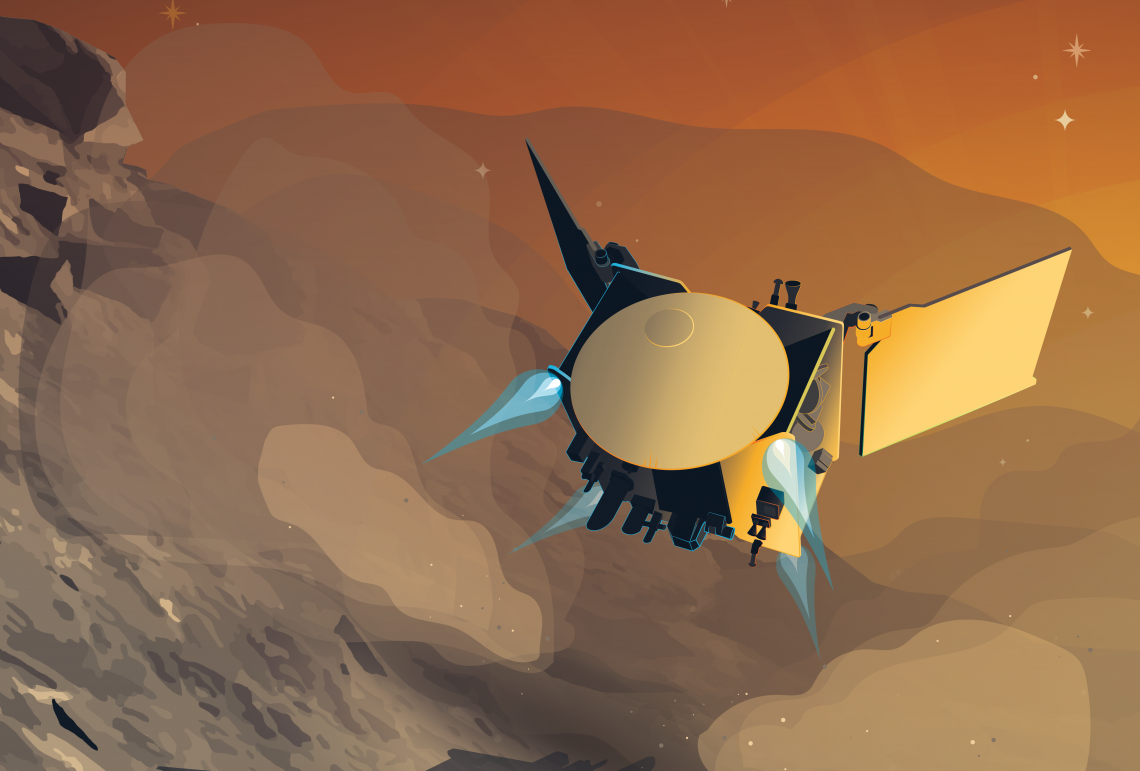Since last I wrote, I joined an expedition to Antarctica for the ICECAP 2019 field season, have published a few things in various outlets, and finished the major edits for my Europa book, now titled THE MISSION. (Its release date has been pushed to January 26, 2021 because of [waves hands at everything].) So it’s been a pretty busy time, and the next few months promise more excitement yet.
For The New York Times, I wrote this story about a small group from NASA that I happened to bump into while in Antarctica. Just to preface this, the ICECAP team, about whom I am writing my next book, spent the field season at Casey Station, a tiny outpost on the east coast of the continent. It is run by the Australian Antarctic Division, and the odds of me bumping into anyone I know are… well to call it astronomical would be understating just how unlikely it would be. You don’t just fly to Antarctica. It’s hard to get permission to go there, dangerous to travel there, and there are scores of stations across the continent (which is bigger than North American) that are well suited for NASA’s purposes, including… I don’t know… American ones!
So one night I’m in the galley with Jamin Greenbaum, my friend and a big part of the Antarctica book to come, and in walks a guy from NASA’s Jet Propulsion Laboratory, where the Europa mission is being built. (To be clear, my next book has nothing to do with space or Europa or any of that.) Who else is there? The great Kevin Hand, one of the world’s foremost Europa scholars.
I can’t even escape that moon while living in the last wilderness on Earth. So the story that I ended up writing was a target of opportunity. The NASA team happened to be there testing an underwater rover they had built, and I joined them for one of its tests. The New York Times piece is the result of that little adventure.
This Robot’s Journey to an Icy Alien Moon Starts Beneath Antarctica
(The New York Times)
CASEY STATION, Antarctica — Near a nice, big hole in the ice and beneath the stone gray, midday Antarctic summer skies, six Adélie penguins stared at six men toiling with tools. The chasm in the ice might have been an inviting entry to the krill-rich waters below. None of the members of the tuxedoed recon party dove into the hole, a square about six feet across. The risk of leopard seals was just too great.
But had they leapt in, the penguins would have discovered not a seal, but a robot.
NASA’s Next Low-Cost Planetary Science Missions Will Visit Venus or the Outer Solar System
(Scientific American)
NASA is set to handle some unfinished business across the solar system, as evidenced by four possible missions it announced yesterday. They are the finalists in the space agency’s Discovery Program competition, a Shark Tank–like face-off in which labs and universities have proposed small, focused spacecraft to explore disparate worlds. More than a dozen ideas, each designed to cost less than $500 million, were submitted to NASA for consideration. Of the four now remaining, only two or perhaps just one will be chosen next year for eventual flight.
“It’s an interesting mix,” says Margaret Kivelson, chair of the Space Studies Board at the National Academies of Sciences, Engineering, and Medicine. “They are well thought-out missions—and to fascinating objects.” Under consideration are spacecraft that would travel to the Jovian moon Io, the most active volcanic body in the solar system; Venus, considered Earth’s “evil twin” because its environmental conditions are hellish, despite the planet being nearly identical to our own in size, mass and composition; and Triton, a moon of Neptune thought to harbor a subsurface ocean.
Searching for the Key to Life’s Beginnings
(Smithsonian)
Before 1976, when Viking 1 and 2 became the first spacecraft to successfully land and operate on the surface of Mars, the global imagination longed desperately for a red planet that harbored life. The Viking landers were designed to test for microbes, but the real hope, held by even the most jaded planetary scientists, was that NASA’s spacecraft would discover complex life on Mars—something that scurried, or maybe a scraggly shrub. Mars, after all, was our last, best hope after astronomers (and the Mariner 2 spacecraft) forever vanquished the notion of dinosaurs stamping across humid, Venusian bogs. It was Mars or bust; Mercury was just too close to the sun, and beyond the asteroid belt, it was believed, lay a no microbe’s land of gas giants and frozen moons.
The exploration of the solar system since Viking has represented a world-by-world grasping for something—anything—that might suggest life as we know it (or life as we don’t). Today the oceans of Jupiter’s moon Europa are what the swamps of Venus and canals of Mars were for the twentieth century: perhaps the best option for annihilating human loneliness. NASA’s next outer planets flagship mission, Europa Clipper, will attempt to determine the icy moon’s habitability. Some future lander or swimmer will have to find the life if it’s there. The habitable zone of the solar system now includes, potentially, every planet in the solar system. Enceladus and Titan, circling Saturn, are good candidates, as is Triton around Neptune. Like water, life might be everywhere.











